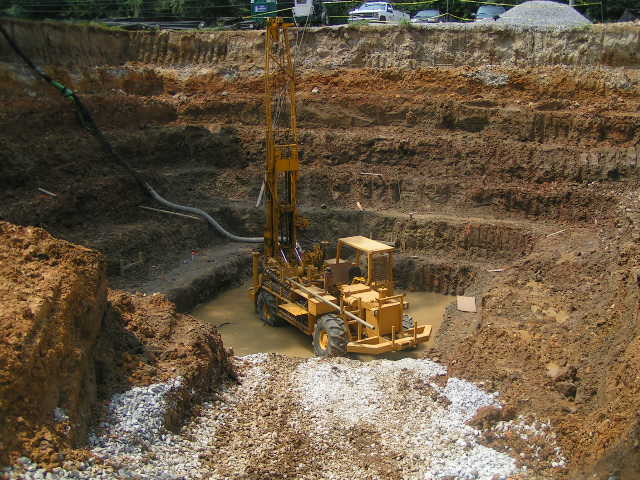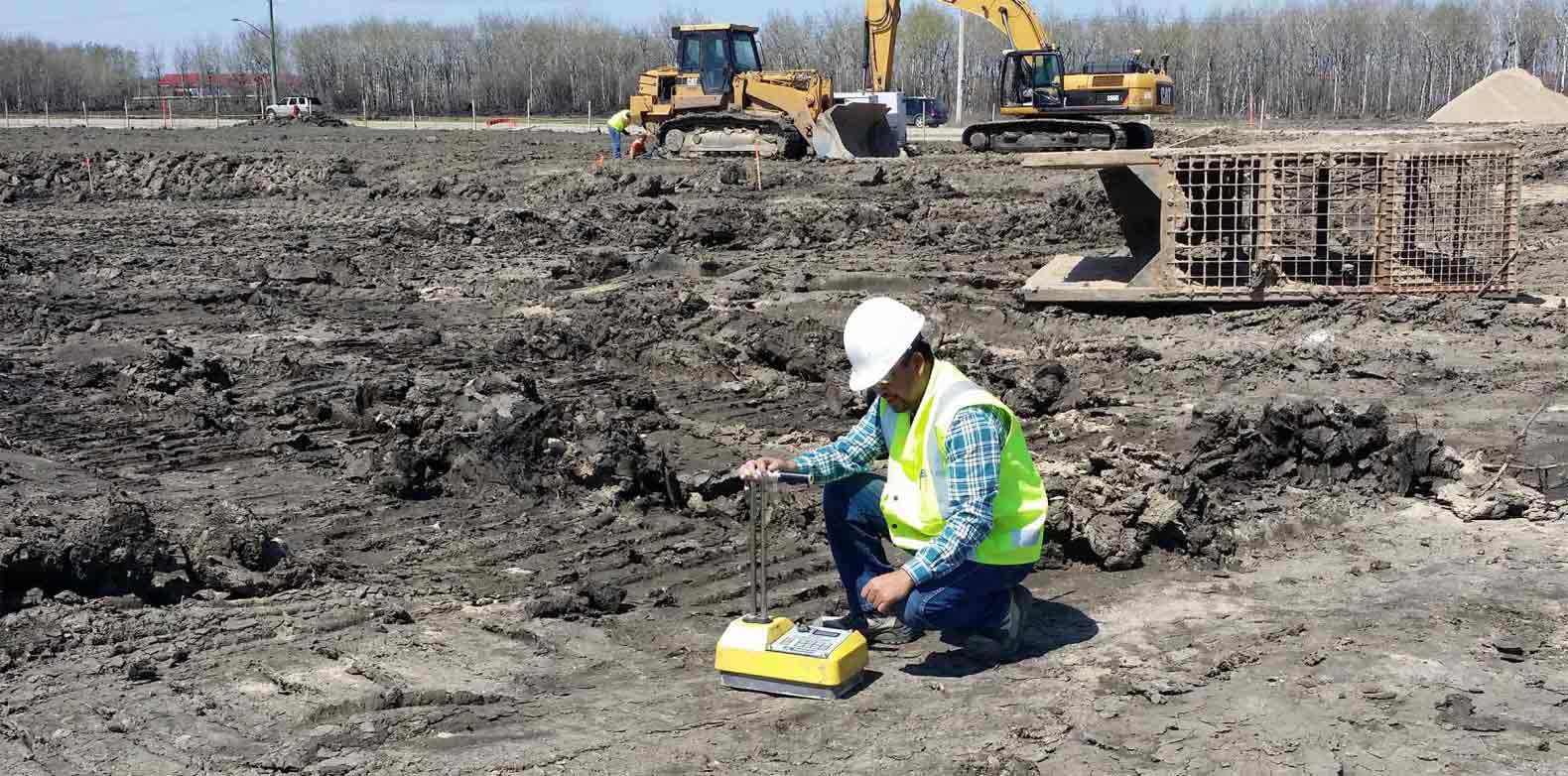Tailings Engineer: Necessary Experience for Sustainable Waste Monitoring in Mining
Tailings Engineer: Necessary Experience for Sustainable Waste Monitoring in Mining
Blog Article
The Interdisciplinary Approaches in the Geotechnical Sector: Connecting the Space In Between Design, Geology, and Environmental Science for Optimal Project Results
The assimilation of design, geology, and ecological scientific research within the geotechnical industry is not simply helpful; it is critical for accomplishing optimal project outcomes. This interdisciplinary cooperation cultivates an extensive understanding of complicated site conditions, permitting ingenious remedies to emerge. By examining essential functions and successful study, we can discover the vibrant interaction that drives job success. Obstacles stay in properly managing these multidisciplinary efforts, elevating questions concerning potential advancements and future trends. What approaches might emerge to facilitate this crucial cooperation and boost the efficacy of geotechnical techniques?
Value of Interdisciplinary Partnership
The significance of interdisciplinary partnership in the geotechnical sector can not be overemphasized. Effective geotechnical projects need the combination of diverse competence from numerous fields, consisting of design, geology, and ecological scientific research. This collaboration guarantees that all elements of a project are taken into consideration, leading to extensive services that deal with complicated obstacles.
Interdisciplinary partnership cultivates innovation by allowing experts to share insights and techniques that may not appear when operating in seclusion (consulting engineer). By leveraging the toughness of multiple disciplines, groups can determine possible threats, maximize style procedures, and enhance the sustainability of geotechnical jobs. Such collaboration promotes an alternative understanding of site-specific conditions, which is important for exact analysis and decision-making.
The complexity of geotechnical jobs demands a worked with strategy to analytical. When engineers, geologists, and ecological scientists interact, they can produce a cohesive technique that straightens technological needs with ecological considerations and regulatory compliance. This harmony not just improves task end results yet likewise adds to the lasting resilience of facilities. Inevitably, interdisciplinary collaboration is important for advancing ideal methods and achieving excellence in the geotechnical sector.
Key Functions of Each Discipline
Cooperation amongst different disciplines is not simply beneficial; it is vital for the successful execution of geotechnical projects. Each self-control-- engineering, geology, and environmental science-- plays an unique yet interconnected role that adds to project effectiveness and sustainability.
Geotechnical engineers are largely in charge of creating structures and making sure structural honesty. They assess dirt and rock properties to analyze load-bearing capabilities, giving vital information for safe construction practices. Their proficiency makes it possible for the solution of cutting-edge options to complex difficulties.

Environmental researchers analyze the possible impacts of building and construction on communities and water resources. They perform ecological evaluations and establish mitigation approaches to lessen unfavorable effects. By incorporating environmental factors to consider, they make certain conformity with regulations and promote sustainability throughout the task lifecycle.
Instance Studies of Effective Integration
Successful combination of geotechnical techniques can be exemplified via numerous study that highlight published here the effectiveness of team effort in addressing complex design obstacles. One noteworthy example is the construction of the Hong Kong-- Zhuhai-- Macau Bridge, where a joint strategy including geotechnical design, geology, and environmental scientific research was essential. Engineers and rock hounds functioned in unison to examine the seabed conditions and enhance the structure design, making certain security and decreasing environmental influence.
An additional impactful situation is the enhancement of slope security in the San Francisco Bay Area, where an interdisciplinary group integrated geotechnical evaluation with environmental assessments. By integrating geological studies and hydrological studies, the team efficiently identified prospective landslide risks and applied reliable reduction procedures, boosting safety and sustainability.
In addition, the redevelopment of Brownfield websites usually requires a multidisciplinary strategy. In one situation in Chicago, collaboration among geotechnical designers, ecological researchers, and city organizers caused the effective removal of infected soil, enabling the safe makeover of the site right into a community park. These case studies highlight that interdisciplinary partnership his explanation not just addresses technical challenges but additionally fosters cutting-edge options that profit both areas and projects.
Obstacles in Multidisciplinary Projects

Additionally, coordinating timetables and workflows amongst numerous teams can be problematic, especially when each technique has special job turning points and deliverables. This misalignment can lead to delays and increased costs. The obstacle of resource allotment additionally impends big; making certain that specific expertise is offered at important times calls for mindful preparation and insight.
Finally, regulatory conformity positions an additional significant challenge. Each discipline may encounter different regulatory frameworks, and straightening these needs to meet task goals can be lengthy and intricate. Resolving these obstacles necessitates solid leadership and efficient interaction approaches to cultivate collaboration and guarantee that multidisciplinary groups function cohesively in the direction of shared objectives.
Future Trends in Geotechnical Practices
As the geotechnical market develops, arising fads are reshaping methods to address the difficulties faced in multidisciplinary tasks - geotechnical engineers. One significant trend is the raised integration of sophisticated technologies, such as expert system and device knowing, right into geotechnical evaluation and design. These modern technologies enhance anticipating modeling and risk analysis, enabling designers to make more enlightened decisions throughout the task lifecycle

Moreover, the fostering of electronic twins and real-time surveillance systems is becoming much more common. These devices facilitate continuous analysis of dirt problems and structural performance, permitting prompt treatments when concerns arise.
Final Thought
In final thought, the integration of design, geology, and environmental science is essential for accomplishing optimum end results in the geotechnical sector. Successful case research studies illustrate the benefits of this method, while acknowledging the obstacles faced in multidisciplinary projects.
The combination of engineering, geology, and ecological scientific research within the geotechnical industry is not simply useful; it is imperative for attaining optimal job outcomes. Reliable geotechnical tasks call for the combination of diverse competence from numerous fields, consisting of engineering, geology, and environmental scientific research.Browsing the complexities of multidisciplinary projects in the geotechnical industry provides several significant obstacles.As the geotechnical market develops, emerging patterns are improving techniques to address the difficulties faced in multidisciplinary tasks. Geotechnical designers are progressively teaming up with ecological researchers to guarantee that tasks line up with sustainability goals and conform with governing requirements.
Report this page